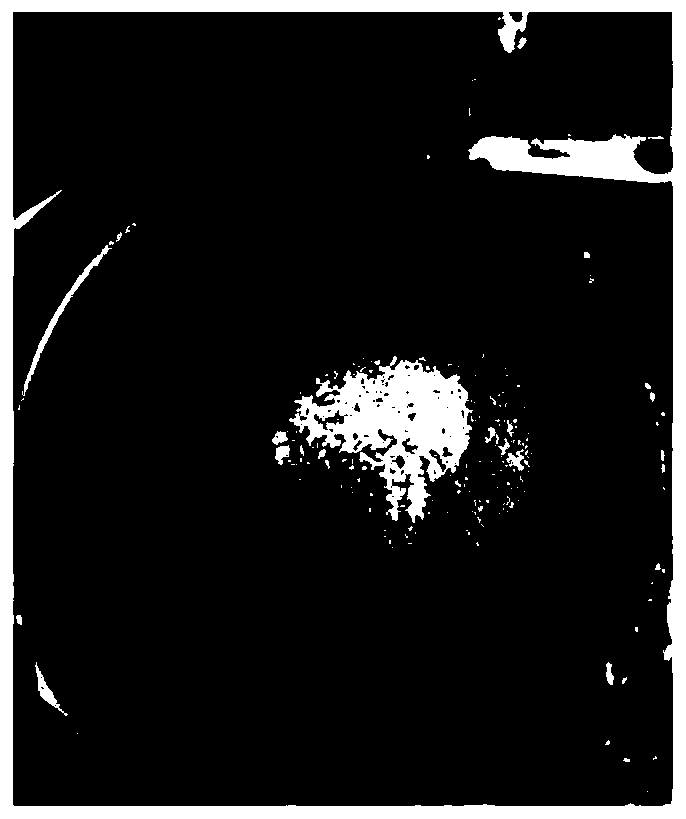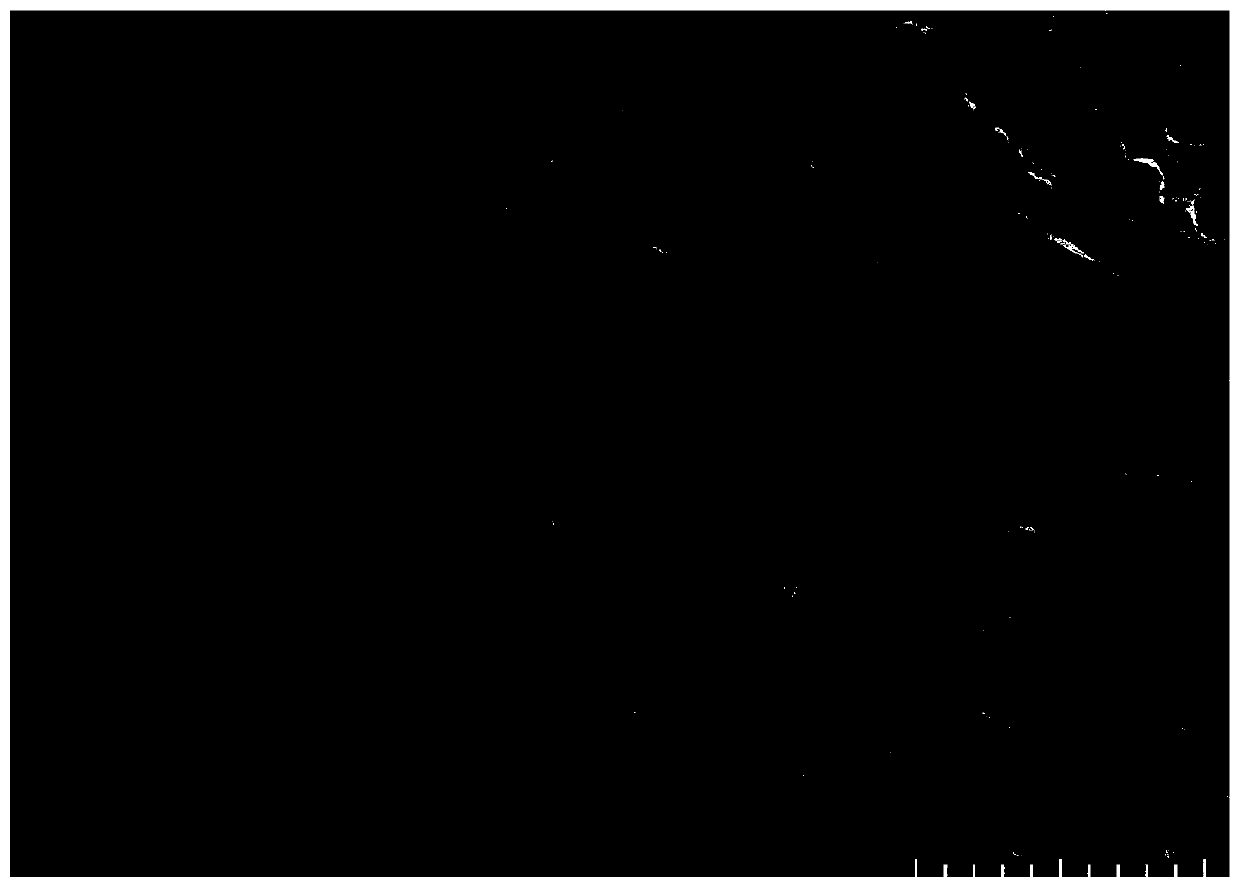Biological sponge based on acellular small intestinal submucosa and preparation method thereof
A small intestinal submucosa, decellularization technology, applied in tissue regeneration, drug delivery, pharmaceutical formulations, etc., can solve problems affecting clinical use, cytotoxicity, environmental pollution, etc., to achieve the growth of supporting cells, good mechanical properties, Beneficial to the effect of clinical operation
- Summary
- Abstract
- Description
- Claims
- Application Information
AI Technical Summary
Problems solved by technology
Method used
Image
Examples
Embodiment 1
[0045] The embodiment of the present invention discloses a bio-sponge based on decellularized small intestinal submucosa. The bio-sponge uses SIS as a raw material and cross-links with fa-PEG to prepare a three-dimensional spatial structure rich in A new type of tissue engineering scaffold material with growth factors and no ethical issues.
[0046] The preparation method of biological sponge comprises the following steps:
[0047] (1) Preparation of decellularized porcine small intestinal submucosa (SIS)
[0048] Squeeze out the contents of the fresh porcine small intestine, and tear off the mesentery attached to the surface. Use scissors, scalpels, etc. to remove the muscular layer, mucosal layer and accompanying fat components of the small intestine, try to remove as much as possible to avoid residues, rinse with tap water repeatedly, and then rinse with distilled water for 3 times, each time for 15 minutes. Utilize 2% povidone iodine to clean and disinfect, use alcohol to ...
Embodiment 2
[0062] The preparation method of biological sponge comprises the following steps:
[0063] (1) Preparation of decellularized porcine small intestinal submucosa (SIS)
[0064] Squeeze out the contents of the fresh porcine small intestine, and tear off the mesentery attached to the surface. Use scissors, scalpels, etc. to remove the muscular layer, mucosal layer and accompanying fat components of the small intestine, try to remove as much as possible to avoid residues, rinse with tap water repeatedly, and then rinse with distilled water for 3 times, each time for 15 minutes. Utilize 2% povidone iodine to clean and disinfect, use alcohol to deiodine, and then soak and clean with sterile distilled water; then use 0.5mol / L sodium chloride solution to treat for 24 hours; discard the sodium chloride solution and wash pig small intestinal submucosa with a concentration of 5% SDS solution was shaken for 30 minutes; finally washed with saline to obtain SIS;
[0065] (2) Pepsin hydroly...
Embodiment 3
[0078] The preparation method of biological sponge comprises the following steps:
[0079] (1) Preparation of decellularized porcine small intestinal submucosa (SIS)
[0080] Squeeze out the contents of the fresh porcine small intestine, and tear off the mesentery attached to the surface. Use scissors, scalpels, etc. to remove the muscular layer, mucosal layer and accompanying fat components of the small intestine, try to remove as much as possible to avoid residues, rinse with tap water repeatedly, and then rinse with distilled water for 3 times, each time for 15 minutes. Use 2% iodophor to clean and disinfect, use alcohol to deiodine, and then soak and clean with sterile distilled water; then use 3mol / L sodium chloride solution for 12h; % SDS solution for 2 hours; finally washed with normal saline to obtain SIS;
[0081] (2) Pepsin hydrolysis
[0082] Add 5% pepsin solution to SIS, and stir at room temperature for 12 hours;
[0083] (3) cleaning
[0084] Filtrating the ...
PUM
 Login to View More
Login to View More Abstract
Description
Claims
Application Information
 Login to View More
Login to View More - R&D
- Intellectual Property
- Life Sciences
- Materials
- Tech Scout
- Unparalleled Data Quality
- Higher Quality Content
- 60% Fewer Hallucinations
Browse by: Latest US Patents, China's latest patents, Technical Efficacy Thesaurus, Application Domain, Technology Topic, Popular Technical Reports.
© 2025 PatSnap. All rights reserved.Legal|Privacy policy|Modern Slavery Act Transparency Statement|Sitemap|About US| Contact US: help@patsnap.com



